Pinch Me
I'm wrapping up another day on the ice, collecting data with my team. I look outside and still can't believe that I'm here, at the bottom of the world, doing science.
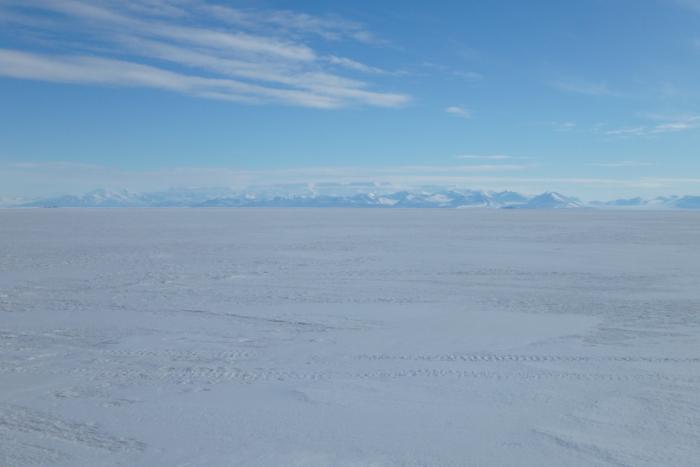 Transantarctic Mountains
Transantarctic Mountains
Our Divers Rock
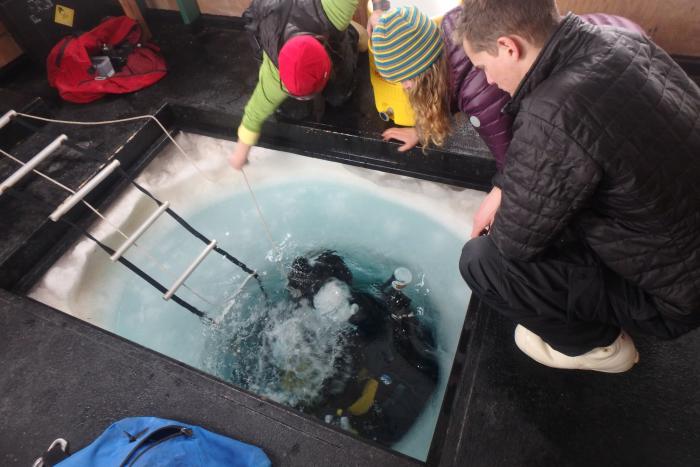 Diver Mandy Frazier Coming up with a bag of fish
Diver Mandy Frazier Coming up with a bag of fish
Our divers went down for another two dives today. They wear heavy weights(around 40-50 lbs), heavy tanks(another 50 lbs or so), and thick insulation from the cold. Their drysuit helps keep out the water, but they still get very cold in the 28 F degree water. They dive for an hour at a time, and have been doing two dives a day.
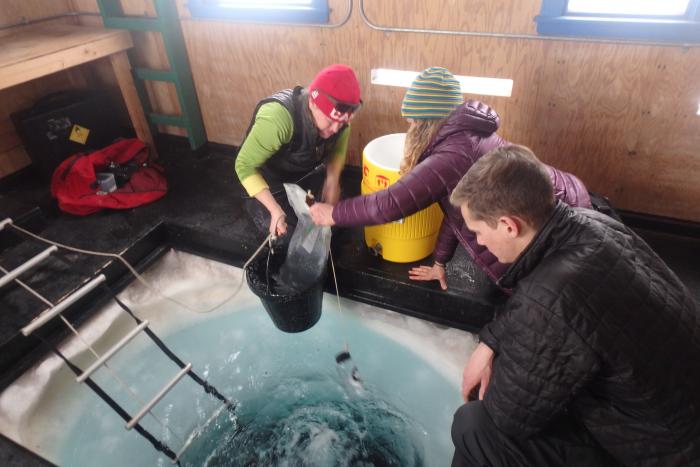 Our team pulling up the bag full of fish
Our team pulling up the bag full of fish
They use a net to catch 200-300 small fish for us. As of today, we have enough fish to start running the main experiment that we are going to conduct!
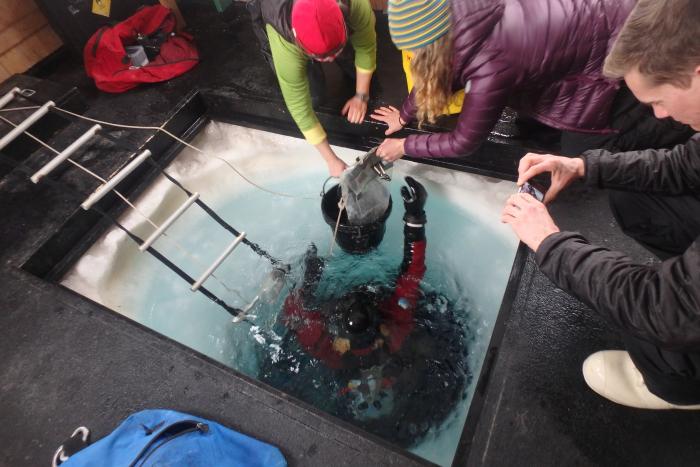 Diver handing up a bag of fish
Diver handing up a bag of fish
Try it Out
If you want to see how cold the water is...you can! Add ice, some salt and water. Stir it until it reaches 28 degrees. Take just a quick feel of the water. IT"S COLD! Never leave your fingers in it for more than a second or two because you could actually damage them.
Freezing Point...You Predict!
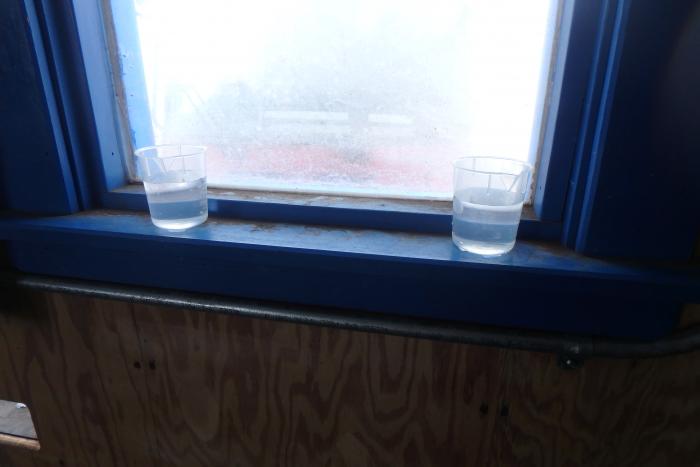 Fresh and Sea Water ready to be frozen
Fresh and Sea Water ready to be frozen
I wanted to see the difference in how fast ice freezes between fresh water and sea water, so I set up an experiment today. I took 150 ml of fresh water, and 150 ml of sea water and set them outside in the 18 degree day. What do you think happened??? Let me know in the comments and I will show you pictures of the results tomorrow.
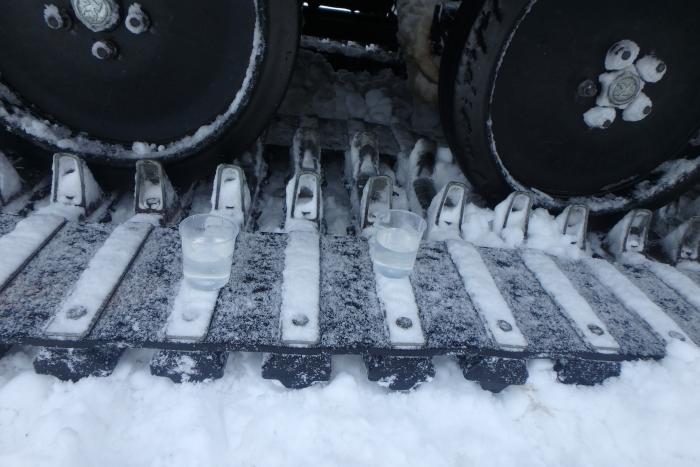 Fresh and Sea water on the PB Tracks waiting to Freeze
Fresh and Sea water on the PB Tracks waiting to Freeze
Mt Erebus
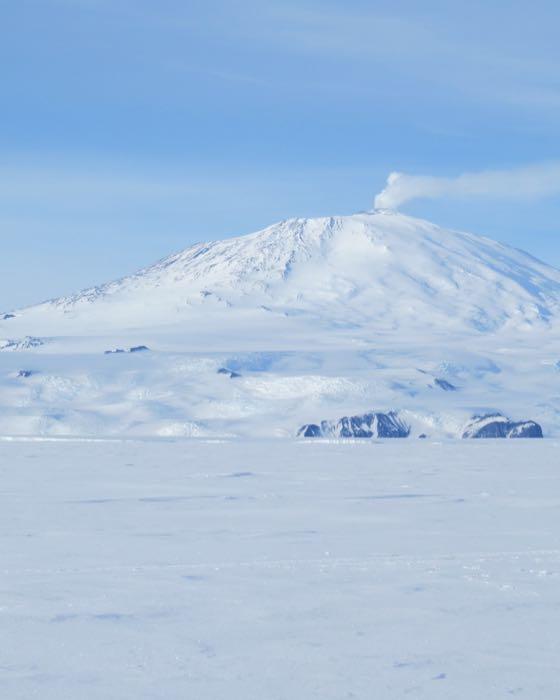 Photo by Jennifer Bault (PolarTREC 2017), Courtesy of ARCUS
Photo by Jennifer Bault (PolarTREC 2017), Courtesy of ARCUS
One of the most interesting mountains to dominate the landscape in McMurdo Sound is the regal Mt Erebus. It constantly spews steam into the air. It is an interesting active intraplate volcano. Instead of forming at the edge of a tectonic plate boundary like many volcanoes, Mt. Erebus is in a rift valley where pieces of the plate are separating from each other. It began about a million years ago as a shield volcano. Shield volcanoes form when magma has low silica content and is runny and thin. Then, about 100,000 years ago, it changed character. The magma thickened, and a stratus volcano was born. It's crater is 250 meters wide at the top and is one of very few volcanoes to contain an active lava lake. I talked to someone who flew over it last year, and he said that you could see the lava lake glowing orange and spitting out gasses.
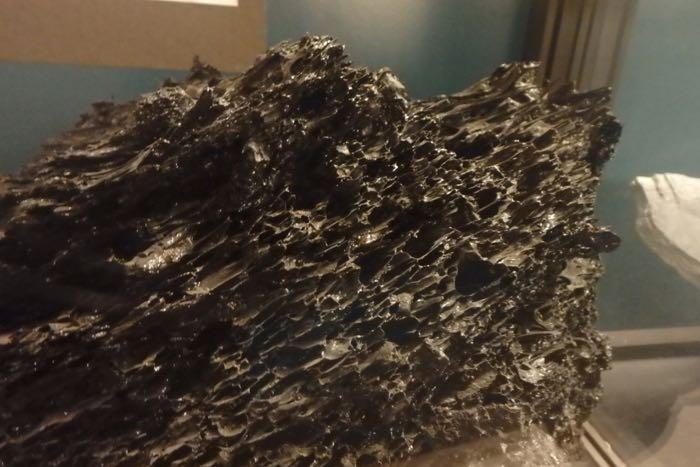 Part of a 2 meter diameter Phonolite bomb ejected from Mt. Erebus in 1984 - on display at the Crary Labs .
Part of a 2 meter diameter Phonolite bomb ejected from Mt. Erebus in 1984 - on display at the Crary Labs .
This volcano produces alkali rich lava known as phonolites. It has been spitting them out on a pretty regular basis since 1972. Thankfully, there are many vulcanologists that monitor this volcano.
Mt. Erebus was first seen by humans in 1841. Sir James Clark Ross named it and a nearby extinct volcano after his ships- the M.S. Erebus and the H.M.S Terror.
Shout out
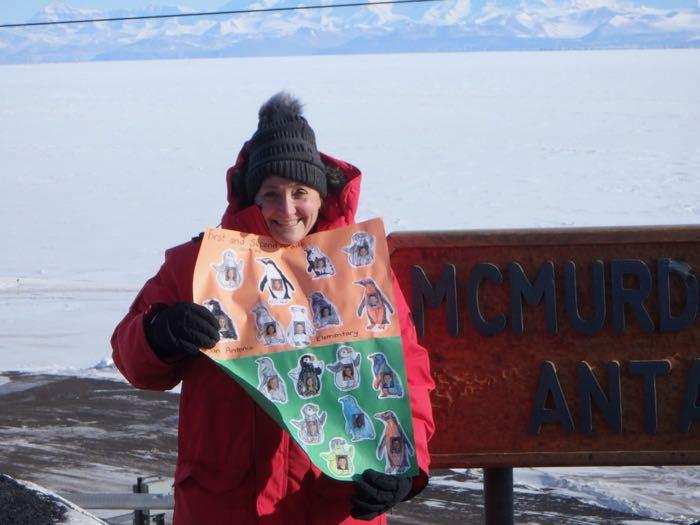 San Antonio Elementary's first and Second Grade Penguins! Good Job Ms. Collie's Class!
San Antonio Elementary's first and Second Grade Penguins! Good Job Ms. Collie's Class!
Today's shout out goes to Ms Collie's first and second graders. You all colored awesome penguins. I hope you are all learning lots about Antarctica! I know I am. Your penguins and I will see you in a few weeks.
Just for fun
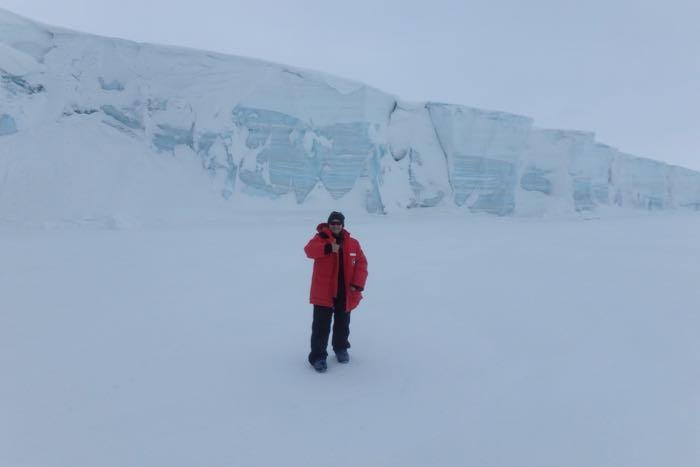 All is well at the Wall
All is well at the Wall
Yep, all is clear. No Nightwalkers at The Wall. Still...Winter is Coming!
Tomorrow
Tomorrow we are not going out in the field. We now have enough fish to start our tests. So, tomorrow will be spent double checking the tanks and gearing up to start the main experiment. Learn all about our tests tomorrow!
Stay Cool,


Comments
Add new comment